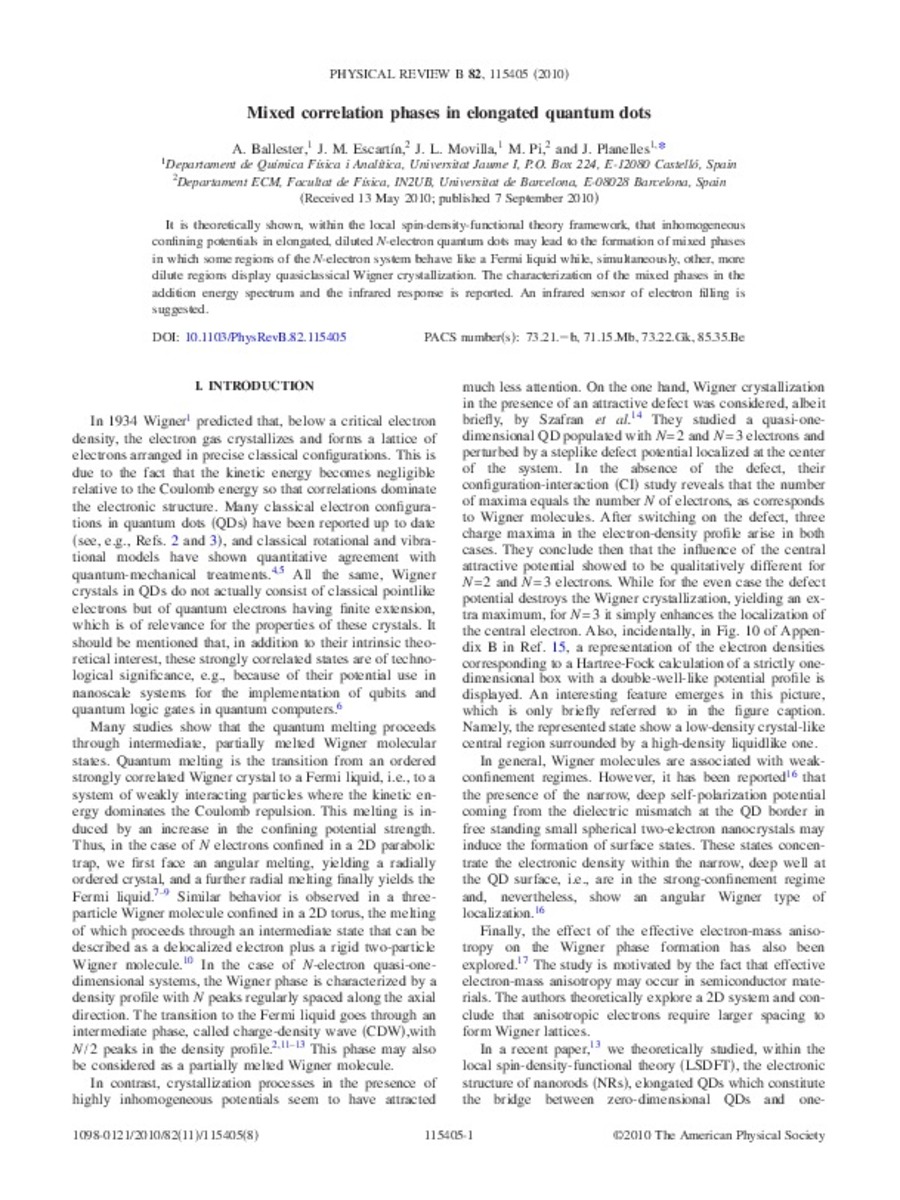Mostrar el registro sencillo del ítem
Mixed correlation phases in elongated quantum dots
| dc.contributor.author | Ballester Caudet, Ana | |
| dc.contributor.author | Escartín, J. M. | |
| dc.contributor.author | Movilla, Jose L. | |
| dc.contributor.author | Pi, Martí | |
| dc.contributor.author | Planelles, Josep | |
| dc.date.accessioned | 2012-02-27T16:04:21Z | |
| dc.date.available | 2012-02-27T16:04:21Z | |
| dc.date.issued | 2010-09-07 | |
| dc.identifier.citation | Physical Review B (2010) vol. 82, no. 11, p. 1-8 | |
| dc.identifier.issn | 1550-235X | |
| dc.identifier.issn | 1098-0121 | |
| dc.identifier.uri | http://hdl.handle.net/10234/32636 | |
| dc.description.abstract | It is theoretically shown, within the local spin-density-functional theory framework, that inhomogeneous confining potentials in elongated, diluted N-electron quantum dots may lead to the formation of mixed phases in which some regions of the N-electron system behave like a Fermi liquid while, simultaneously, other, more dilute regions display quasiclassical Wigner crystallization. The characterization of the mixed phases in the addition energy spectrum and the infrared response is reported. An infrared sensor of electron filling is suggested. | |
| dc.format.extent | 8 p. | |
| dc.format.mimetype | application/pdf | |
| dc.language.iso | eng | |
| dc.publisher | American Physical Society | |
| dc.rights.uri | http://rightsstatements.org/vocab/CNE/1.0/ | * |
| dc.subject | Quantum dots | |
| dc.subject | Electron | |
| dc.subject.lcsh | Molecules | |
| dc.subject.lcsh | Quantum electronics | |
| dc.subject.other | Molècules | |
| dc.subject.other | Electrònica quàntica | |
| dc.title | Mixed correlation phases in elongated quantum dots | |
| dc.type | info:eu-repo/semantics/article | |
| dc.rights.holder | © American Physical Society | |
| dc.identifier.doi | http://dx.doi.org/10.1103/PhysRevB.82.115405 | |
| dc.rights.accessRights | info:eu-repo/semantics/openAccess | |
| dc.relation.publisherVersion | http://prb.aps.org/abstract/PRB/v82/i11/e115405 | |
| dc.type.version | info:eu-repo/semantics/publishedVersion |
Ficheros en el ítem
Este ítem aparece en la(s) siguiente(s) colección(ones)
-
QFA_Articles [817]
Articles de publicacions periòdiques







